Men’s Corner
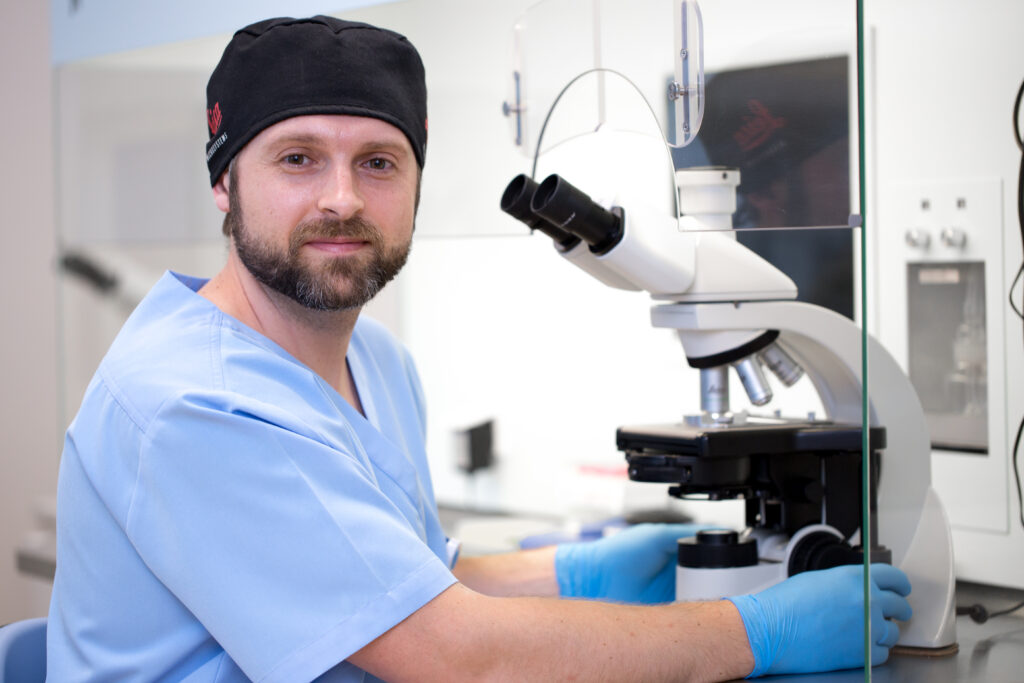
Welcome to Men’s corner
Our goal is for all men to have the knowledge before the need.
We understand that your fertility health can be hard to talk about -especially for men. That’s why we have created this ‘men’s only’ section of our website to help you understand your fertility and treatment options
Conceiving a healthy baby depends on a number of factors, including healthy sperm. In fact, male infertility is the second biggest issue after a woman’s age so it’s important to understand how the male reproductive system works.
Male factor infertility affects around half of all infertile couples, the good news is that the most common causes of male infertility are easily diagnosed, and most can also be helped.
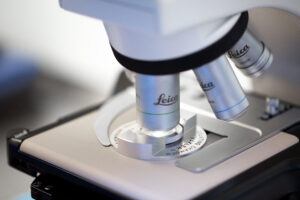
Semen Analysis
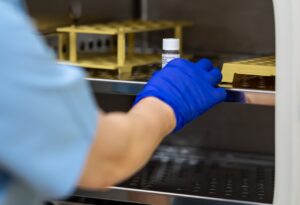
Sperm Processing with Biological Viability Analysis
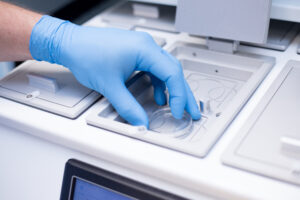
Microbiological Analysis of Ejaculate
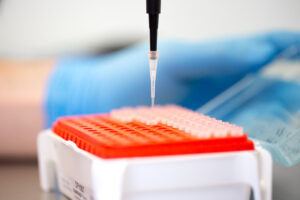
Functional Maturity Test for Spermatozoa (HBA Test – Sperm-Hyaluronan Binding Assay)
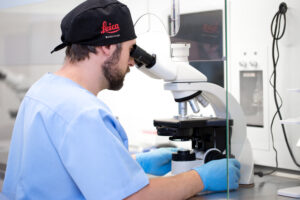
Test for the Presence or Absence of Leukocytes in Ejaculate (MAR Test)
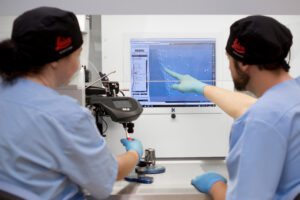
Detailed Morphological Analysis of Spermatozoa (using strict Kruger criteria)
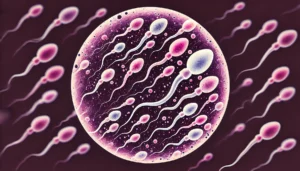
Sperm Vitality Test
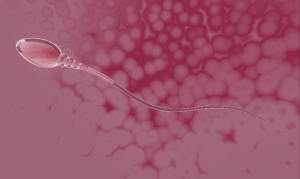
Male Oxidative Stress Infertility Test (using MiOXSYS)

Evaluation of DNA Fragmentation in Human Spermatozoa
Sperm Processing
Semen Centrifugation
Centrifugation is one of the primary methods used for semen processing and sperm isolation. This procedure is performed under sterile laboratory conditions and is indicated for subsequent assisted reproductive techniques such as intrauterine insemination (IUI), conventional in vitro fertilization (IVF), and/or ICSI (Intracytoplasmic Sperm Injection). Centrifugation is also used in cases of retrograde ejaculation, sperm freezing (cryopreservation), and azoospermia (absence of sperm). In cases of azoospermia, the goal of centrifugation is to concentrate sperm at the bottom of the tube as sediment while reducing the volume of the ejaculate. If sperm are present, they will be isolated and can be used for fertilization via ICSI.
Swim-Up Technique
The swim-up technique is a method used to select sperm based on their motility in the semen and the culture medium. It is important not to centrifuge the semen before applying the swim-up method, as this could impair sperm motility and damage their cell membranes. This technique is ideal for separating motile sperm from immotile sperm. The procedure involves layering the liquefied semen under a culture medium or placing the semen above the medium. Motile sperm will swim into the culture medium, while non-motile sperm remain behind. This method yields fewer sperm than other isolation techniques, but it selects sperm with better quality, which is important for IVF or ICSI fertilization.
Density Gradient Centrifugation
Density gradient centrifugation is a technique that separates and concentrates motile sperm while eliminating non-motile sperm, cellular debris, germ cells, and immune system cells (such as leukocytes, lymphocytes, and red blood cells). For this method, gradient solutions with varying concentrations (e.g., 40% and 80%) are used to separate sperm based on their density. The most motile sperm will settle as sediment at the bottom of the tube, while non-motile sperm and other cells remain at the boundary between different concentrations of the gradient solution. This technique is commonly used to prepare sperm for conventional IVF or ICSI.
Swim-Up After Density Gradient Centrifugation
This technique combines two methods for sperm isolation—density gradient centrifugation followed by the swim-up method. The ejaculate is first processed using density gradient centrifugation. Afterward, the sediment is layered with an appropriate culture medium, and the motile sperm swim up into the medium. This approach is commonly used to prepare sperm for ICSI or IVF fertilization.
Magnetic-Activated Cell Sorting (MACS)
MACS is a method used to selectively remove sperm with fragmented DNA and those undergoing apoptosis (programmed cell death) while retaining sperm with intact plasma membranes. The procedure uses magnetic microspheres coated with annexin V, which binds to phosphatidylserine (a lipid) that appears on the surface of apoptotic sperm. The sperm are then passed through a separation column within a magnetic field, where defective sperm are retained, and healthy sperm pass through. The resulting sperm sample, containing only viable, DNA-intact sperm, is then used for ICSI or other assisted reproductive procedures. MACS is recommended for cases of severe male infertility, elevated DNA fragmentation index (DFI >30%), unsuccessful previous fertilization attempts, poor-quality embryos, recurrent implantation failures, or miscarriage.
Microfluidic Systems (Microchips) for Sperm Isolation
In assisted reproduction, the most effective way to overcome severe male factor infertility is through ICSI, which involves injecting a pre-selected sperm into a mature egg. Sperm selection is crucial for successful pregnancy during IVF cycles. The natural mechanisms that guide sperm to the egg provide an ideal model for developing techniques to overcome reproductive challenges. Sperm travel through natural microchannels in the female reproductive tract to reach the egg. This movement can be mimicked in vitro using microfluidic systems, which recreate the sperm’s journey and facilitate sperm isolation for fertilization. Recent developments in microfluidic systems have increased their application in assisted reproductive techniques, including sperm isolation, fertilization, and embryo culture. These systems are gaining recognition due to their superior efficiency compared to conventional techniques such as centrifugation, swim-up, and density gradient centrifugation. Microfluidic devices can select motile, high-quality sperm with low DNA fragmentation in as little as 10–30 minutes, creating a more natural and efficient environment for sperm selection. Microchips work by using small channels that simulate the female reproductive tract, providing a confined environment that allows sperm to be separated based on motility and morphology. The use of microfluidics eliminates the need for prior semen processing, as long as the sample is not too concentrated or viscous, and sperm can be observed during the selection process under a microscope.
Processing and Isolation of Sperm from Retrograde Ejaculation
In cases of retrograde ejaculation, sperm are isolated from the urine for use in assisted reproductive techniques or freezing. Retrograde ejaculation occurs when the semen, instead of being expelled through the urethra, is redirected into the bladder due to a malfunctioning sphincter. This condition can result in reduced ejaculate volume or even complete absence of semen (aspermia). In such cases, sperm are collected from the urine, which will appear cloudy after orgasm. If retrograde ejaculation cannot be treated pharmacologically, sperm are isolated by alkalizing the urine to raise the pH and preserve sperm motility.
Testicular and Epididymal Aspiration/Biopsy (PESA, MESA, TESA, TESE)
Testicular (TESA, TESE) and epididymal (PESA, MESA) aspiration/biopsy techniques are used to extract sperm directly from the testicles or epididymis. These techniques are indicated for men with azoospermia, a condition in which sperm is absent from the ejaculate. Sperm retrieved from the testicles or epididymis are not fully mature and may lack motility and the ability to fertilize an egg, although they are genetically normal. These sperm require assisted reproductive techniques such as ICSI to facilitate fertilization and pregnancy. Any viable sperm left after ICSI can be frozen for future use. There are several methods for sperm retrieval: PESA (Percutaneous Epididymal Sperm Aspiration) involves inserting a needle through the scrotal skin to collect sperm from the epididymis. MESA (Microepididymal Sperm Aspiration) is a similar technique but involves surgically accessing the epididymis. TESA (Testicular Sperm Aspiration) involves using a needle to extract sperm directly from the testicles. TESE (Testicular Sperm Extraction) involves surgically removing a small tissue sample from the testicles to obtain sperm. These techniques are recommended for men with azoospermia caused by primary testicular failure, congenital absence of the vas deferens, obstructive azoospermia, or after a vasectomy. The ability to extract sperm from the testicles or epididymis allows for ICSI fertilization without the need for donor sperm, even when sperm count is low or absent in the ejaculate.
Freezing of Sperm
Sperm freezing is a procedure designed to preserve sperm under optimal conditions, ensuring its successful use even after an extended period. Gametes are cryopreserved using a controlled-rate slow-cooling method or, more recently, a rapid freezing technique known as vitrification. The sperm is stored with the help of a cryoprotectant, typically 10% glycerol in a nutrient medium. To enhance viability, reduce mortality, and preserve a high percentage of motile sperm after thawing, additional cryoprotective agents such as growth factors and cholesterol may be included.
Cryopreserved sperm is utilized for sperm donation or to preserve fertility in men undergoing vasectomy or treatments that may compromise fertility, such as chemotherapy, radiotherapy, or surgery. Sperm freezing is performed for a variety of reasons, including:
- Prior to radiotherapy or chemotherapy, which may severely disrupt spermatogenesis and potentially lead to its complete cessation.
- Before surgical procedures on the male reproductive system.
- In preparation for an IVF procedure when the male partner cannot be present on the day of egg retrieval.
- When sperm collection is difficult due to stress, anxiety, or health conditions that prevent normal ejaculation.
- In cases of significant abnormalities identified in a semen analysis.
- When the patient wishes to preserve their sperm for personal reasons.
